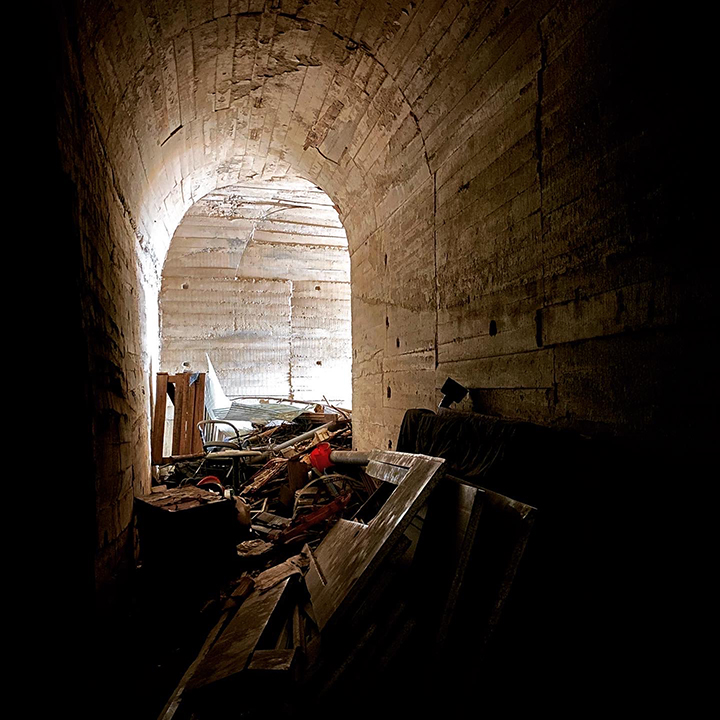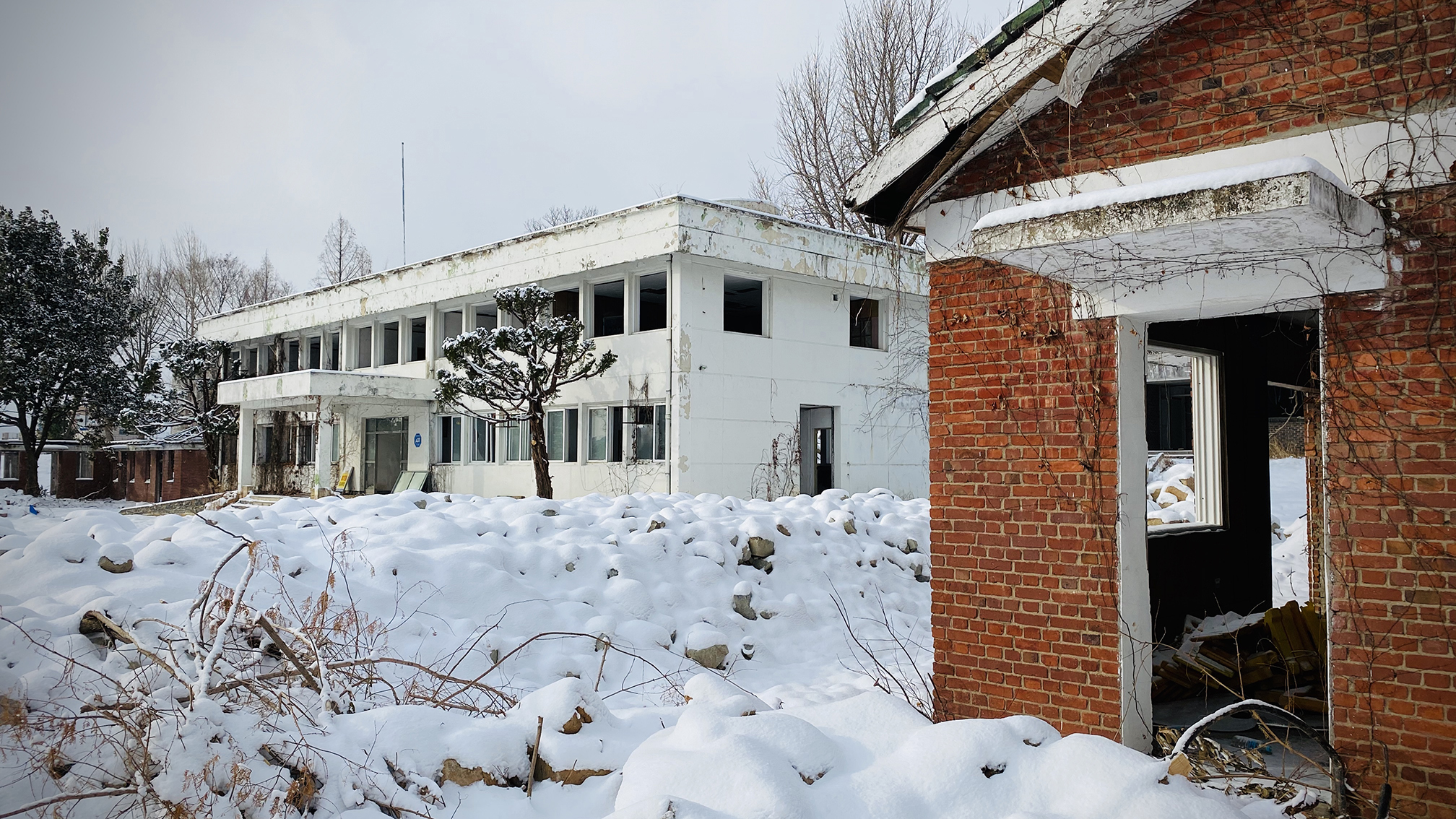Gwangju City Preserves 5.18 Torture Site
By Isaiah Winters.
On the third anniversary of my joining the Gwangju News team, I’m happy to return to a historic site that was the topic of my very first Lost in Gwangju article: the former 505 Security Forces’ command center in Ssangchon-dong. There many changes are underway now that it’s finally undergoing much-needed restoration as the forthcoming 5.18 History Park, and on a well-timed revisit, I was fortunate to discover a secret bunker beneath the command center’s grounds, adding to its grim mystique. Ultimately, the site is shaping up to be one of the relatively rare success stories of historical preservation that I’ve seen over the years – and one with a story still to tell.
To provide some historical context, during the Gwangju Uprising of May 1980, the 505 Security Forces were stationed at this site and tasked with suppressing the region’s flourishing democratization movement. This involved detaining, interrogating, and torturing pro-democracy activists who opposed South Korea’s U.S.-backed junta under military strongman Chun Doo-hwan. Said activists were forced into the basement’s many underlit chambers and “tenderized” for their unorthodox political views. Though the immediate aims of the Uprising were stomped out, the country would surprise many by holding legitimate democratic elections just seven years later, thereby ushering in the current Sixth Republic.

It’s also important to note that the democracy that emerged from the tumult of the 1980s is, in broader retrospect, part of a much larger wave of global democratization. This “third wave” includes democratic transitions in Taiwan, the Philippines, and much of Latin America. Overshadowing these were the more closely observed post-communist transitions across Eastern Europe that rose from the Soviet Union’s ashes. Interestingly, the Chinese Communist Party had its own well-known brush with pro-democracy activists during the 1989 Tiananmen Square protests, which it quashed in 505-fashion. The irony is that despite Tiananmen Square’s ultimate failure, it’s still better known and visualizable (see “Tank Man”) than the Gwangju Uprising’s delayed success. Accordingly, anyone seeking to convey 5.18’s global significance would benefit from framing it as the Korean precursor to the Tiananmen Square Massacre.
Given the command center’s infamous role in the Gwangju Uprising, I’ve been keenly interested in its fate since I found it in 2017. For some, I imagine the torture site doesn’t deserve any taxpayer investment beyond a good bulldozing and routinely salted earth, while for others, its 3.8 billion won conservation as a public memorial and educational site far outshines the abhorrence it engenders. I’d put myself firmly among the latter group, though I do have my qualms with the way in which the site is being preserved. On my most recent visit, I noticed that the semi-circular sentry posts located along the site’s perimeter had been completely demolished. These were the most visually stunning remnants of the site and should have been saved. What’s more, the towering bamboo thickets surrounding the outer walls gave the site a feeling of wild seclusion that harmonized with the past – but those are sadly all gone, too.
The silver lining to their removal is that more of the compound was exposed around the time of my last visit. This allowed me to spot a tunnel entrance in a nearby hillside that otherwise would have remained completely overgrown and out of sight. Upon closer inspection, what I thought was just one tunnel entrance turned out to be two – with one being far larger than the other. The larger one had clearly been boarded up for years, though one of the wood panels was missing, making it easily accessible. Roughly three meters high by two across, this L-shaped tunnel led to a capacious, pitch-black bunker that reeked of mold. While walking it end to end, my weak phone light revealed an additional pair of claustrophobic tunnels on one side, though where they led was beyond my paygrade to find out. They were, however, more vertical than horizontal in alignment, which suggests their function was more in relation to what was immediately above the bunker.

Given the bunker’s location and size, my best guess is that it was connected to the onsite fueling station above, possibly acting as a storage area for fuel or other material. To give some perspective as to its size, I guesstimate that it could hold two large city buses side by side with plenty of room to spare. It’s therefore not hard to imagine large tanks or barrels down there with pump systems connecting upward. Whatever was kept down there, the larger tunnel entrance was likely used for moving bulky items in and out, while the smaller entrance was used more for moving personnel on a quotidian basis or whenever loading and unloading clogged the larger tunnel. Wanting to know more, I turned to the internet but unfortunately found nothing, which is understandable given its former role as a secretive military site.

Whether the proposed 5.18 History Park will preserve the bunker is hard to ascertain. Around the time of the groundbreaking ceremony in July 2020, an architectural rendering of the proposed changes was released, but the bunker is hard to make out and lots of buildings of lesser historical value are missing, as they’ve already been demolished. In their place will be a learning center, an outdoor performance hall, and a parking lot, in addition to a few symbolic monuments like a large gate and colonnade. Another major focus of the site’s preservation is on providing the public with more freely accessible green spaces, including a large lawn and walking trails. Ultimately, the most significant buildings will be fully preserved by 2023, while other parts will be finished sooner and made public in stages(1). I look forward to seeing this piece of history restored and its lessons shared in the years to come.
Source
1.Park, J. (2020, July 15). 광주시, 16일 505보안부대 옛터서 “5·18역사공원” 착공식. 머지투데이 [Money Today]. https://news.mt.co.kr/mtview.php?no=2020071517228218596
The Author
Originally from Southern California, Isaiah Winters is a Gwangju-based urban explorer who enjoys writing about the City of Light’s lesser-known quarters. When he’s not roaming the streets and writing about his experiences, he’s usually working or fulfilling his duties as the Gwangju News’ heavily caffeinated chief copy editor. You can find more of his photography on Instagram @d.p.r.kwangju



